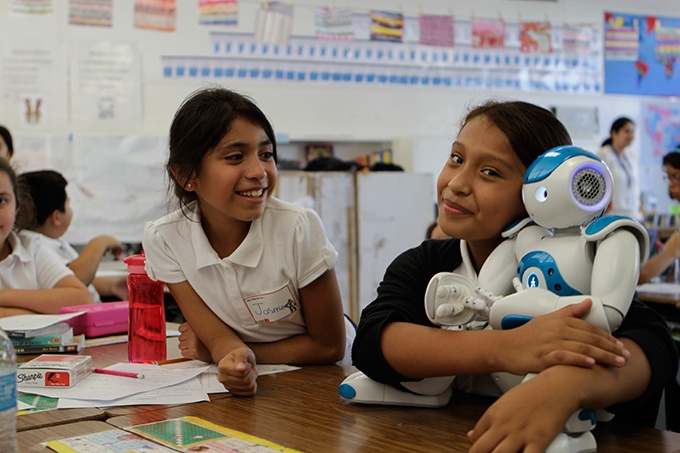By Aaron Maurer

Image by StockSnap from Pixabay
STEAM education is possible during remote learning, and teacher communities can generate creative ideas to keep the learning moving forward
After the abrupt school closures in March, teachers have been on a constant back and forth outlining what online learning, in-person lessons, and hybrid approaches will look like moving forward.
As the STEAM lead for 21 school districts in Iowa, I’ve seen plans change as the various districts in my state weigh our local government’s requirements. While we entered the school year with a sense of uncertainty – and continue to face uncertainties even as we settle into new routes – what is certain is the importance of continuing our student’s education regardless of whether it is online, in the classroom, or a hybrid of both.
That’s why I’ve turned to an online community of fellow STEAM educators to exchange various perspectives and approaches to continue teaching in a hands-on way – even when students are six feet apart. As educators of various subjects and grades, we face different, yet similar challenges as we navigate the school year. I’ve come up with a few ways that teachers can band together to create a network that offers new perspectives, team collaboration, and understanding.
Here are three ways that I found the power of community:
Explore teacher blogs. One of the best ways to get outside of your own teacher bubble is to tune into other teacher’s blog posts. I will typically share on my blog a variety of STEAM lesson plans and ideas that can aid as helpful tools for other educators. In one blog post, I unbox my LEGO Education SPIKE Prime kit and explain the many built in tools that are helpful for teaching STEAM to middle schoolers.
Teachers often leave comments asking about STEAM lesson plans that are second nature for me as a LEGO Education Master Educator, but new to them, and I love to be there as a resource to answer questions and provide a new perspective. Rather than answering teacher questions 1:1, I decided to host all questions on my blog, inviting other educators to weigh in. We all share a similar goal of creating the most effective and fun lesson plans for our students, so try engaging with a blog post that resonates with you and share your own tips and strategies with the community. The more engagement we have, the stronger of a teaching community we will become.
Host a brainstorm. Building off the interactive blog posts, I hosted an hour-long conversation with other amazing STEAM educators from the LEGO Education Master Educator Program. In what I called the “Bodacious Brainstorm,” five STEAM educators came together to brainstorm ideas, share thoughts, change perspectives, and teach each other about purposeful play. Together we brainstormed ideas on how to continue hands-on learning in a virtual or hybrid classroom setting, including how students can use LEGO bricks, Scratch programming, and other online simulators to learn STEAM from home.
Teachers agreed that this brainstorm was a great morale boost. By understanding other teacher’s perspectives, we can help our students see the world differently. Brainstorms are one of my favorite tactics for bringing the learning community together, and I will continue to host them once a month. In our next brainstorm, we will focus on building and connecting in the Minecraft Realm by first playing and exploring the adventure game, “Zork.” Whether you join a brainstorm or start your own, you will feel motivated and inspired by your peers.
Join the LEGO Education community. Teaching communities are great, though they can be generic at times if you are looking for a specific topic. What makes the new LEGO Education Community unique is that it is curated specifically for STEAM educators. With our similar backgrounds, this new online forum allows us to share ideas and lesson plans that put learning through play first. My favorite aspect of the community so far is the breakdown of learning by age, because STEAM challenges students at all learning levels. I’ve come across potential robotics lessons that I hadn’t even considered before that I’ll bring back to help my districts teach STEAM this school year. In addition to helping prepare for potential roadblocks, this learning community inspires STEAM educators to revamp lesson plans and share their success stories. STEAM education and learning through play is the best preparation for honing 21st century skills, so having a specific place where we can bounce ideas off one another makes a real difference in our teaching.
While this year hasn’t been easy, after learning from educators across the country, I am hopeful for the future. Many of us haven’t been in our school buildings or classrooms since March, meaning we no longer are able to connect face-to-face in the teacher breakroom or during our in-person staff meetings. Having a community of educators to talk to, connect with, and learn from has been invaluable during these times. I urge educators to consider setting up their own teacher communities. The best we can do is work together to stay motivated and continue learning how to be the best teachers for our students.
Join RobotLAB!

CoderZ is an online educational environment that improves students 21st century skills, while they are having fun programming their own virtual cyber robot. CoderZ and RobotLAB has different lessons to do at home! Check them out Here

